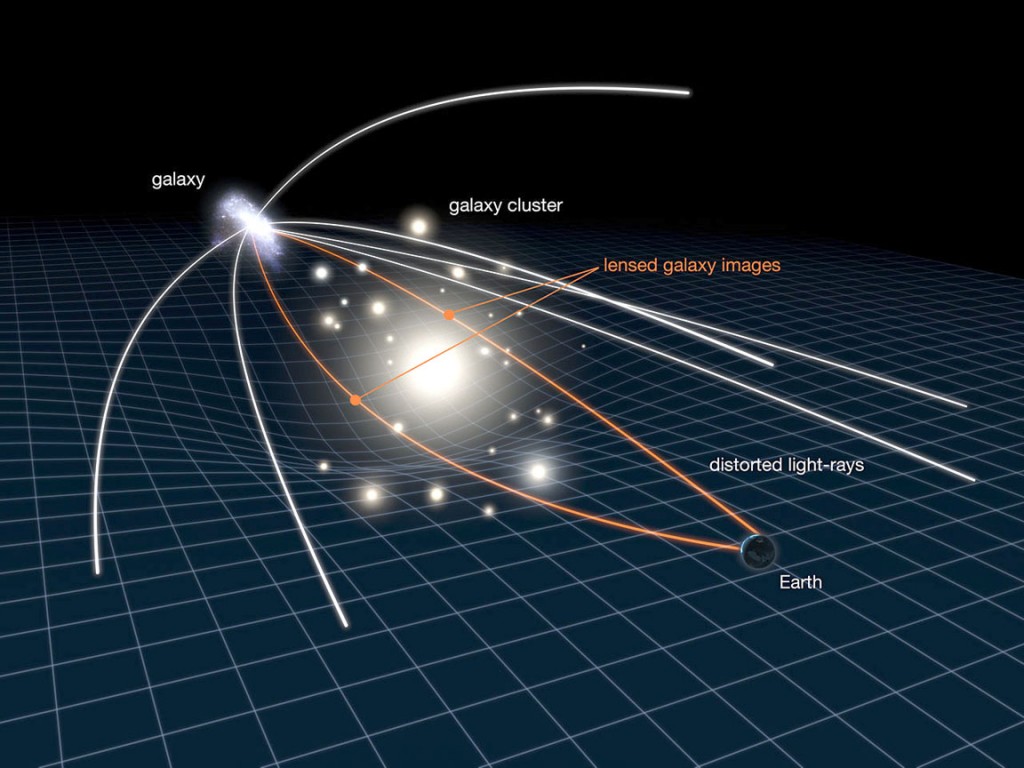- Using NASA’s James Webb Space Telescope researchers plan to investigate how new stars are born.
- For this, a natural phenomenon called “Gravitational lensing” is to be used.
- The gravitational field of a massive object will extend far into space, and cause light rays passing close to that object to be bent and refocused somewhere else.
- This phenomenon is ‘Gravitational lensing’, simply put, ‘mass bends light’.
- The effect is analogous to that produced by a lens.

- The more massive the object, the stronger its gravitational field and hence the greater the bending of light rays.
- It is just like using denser materials to make optical lenses results in a greater amount of refraction.
- In effect, these are natural, cosmic telescopes, called gravitational lenses.
- These large celestial objects will magnify the light from distant galaxies that are at or near the peak of star formation.
- The effect allows researchers to study the details of early galaxies too far away.
- Gravitational lensing happens on all scales,
- The gravitational field of galaxies and clusters of galaxies can lens light.
- On smaller objects such as stars and planets.
- Even the mass of our own bodies will lens light passing near us a tiny bit, although the effect is too small to ever measure.
- The Milky Way today forms the equivalent of one Sun every year, but in the past, that rate was up to 100 times greater.
- NASA now plans to look billions of years into the past in order to understand how our Sun formed.
- The programme is called ‘Targeting Extremely Magnified Panchromatic Lensed Arcs and Their Extended Star Formation’, or TEMPLATES.




